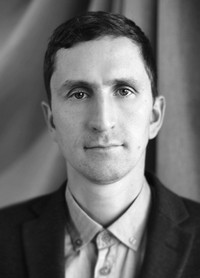BIOMECHANICAL PARAMETERS OF RUNNING TECHNIQUE IN THE DISTANCE OF SPRINTER FINALISTS OF THE WORLD CHAMPIONSHIP
Ключевые слова:
sprinting, sprinting technique, 100 and 200 m running, spatiotemporal and kinematic characteristics of running, biomechanical parameters of sprintingАннотация
Objective of the study was to compare the spatio-temporal, kinematic and angular characteristics of the running technique over the distance of the strongest sprinters in the world at 100 and 200 m.
Methods and structure of the study. As a methodological basis for the study, one of the methods of biomechanics, analysis, was adopted. The data of spatio-temporal, kinematic and angular characteristics of distance running, presented in the IAAF biomechanical report of the men's 100 and 200 m finals of the 2017 World Championships in Athletics, were analyzed.
Results and conclusions. In the middle of the straight in the 100 m run, the average speed is 11.60 ± 0.06 m/s, in the 200 m run - 10.31 ± 0.09 m/s. The difference in speed is achieved due to the frequency of steps (4.80±0.08 and 4.27±0.05 sh/s, respectively, p≤0.05), since the step length at both distances is identical and equals on average 2 .42 m. A greater frequency of steps per 100 m is achieved due to the shorter time of the reference (0.093±0.002 and 0.103±0.002 s, p≤0.05) and unsupported (0.116±0.002 and 0.132±0.003 s, p≤0.05) periods . When placing the leg on the support, significantly significant differences (p≤0.05) are observed in the angle of the torso, the angle between the thigh of the fly leg and the vertical. When removing the leg from the support, a significantly significant difference (p≤0.05) is observed in the angle of the torso and the angle between the lower leg of the supporting leg and the horizontal line.
Библиографические ссылки
Balandin S.I., Balandina I.Yu. Sovershenstvovaniye takticheskogo masterstva v podgotovke vysokokvalifitsirovannykh beguniy na 400 m [Improving tactical skills in the training of highly qualified 400 m runners]. Sport, chelovek, zdorovye. [Sport, man, health]. Proceedings International Congress, December 8-10, 2021, St. Petersburg, Russia. St. Petersburg, 2021. pp. 53-55.
Balandin S.I., Balandina I.Yu., Dmitriev I.V. et al. Sravnitelnyy analiz osnovnykh kharakteristik tekhniki preodoleniya distantsiy 100 s/b i 110 s/b silneyshimi baryeristami i baryeristkami mira [Comparative analysis of the main characteristics of the technique of overcoming distances 100 s/b and 110 s/b by the strongest hurdlers and hurdlers of the world]. Teoriya i praktika fizicheskoy kultury. 2021. No. 7. pp. 32-35.
Bissas A., Walker J., Tucker C., and Paradisis G. (2018). Biomechanical Report for the IAAF World Championships 2017: 100 Metres Men. Birmingham, UK: International Association of Athletics Federations.
Pollitt L., Walker J., Tucker C. and Bissas A., (2018). Biomechanical Report for the IAAF World Championships 2017: 200 Metres Men. Birmingham, UK: International Association of Athletics Federations.

Дополнительные файлы
Опубликован
Версии
- 2022-08-22 (3)
- 2022-08-22 (2)
- 2022-08-22 (1)
Как цитировать
Выпуск
Раздел
Лицензия

Это произведение доступно по лицензии Creative Commons «Attribution» («Атрибуция») 4.0 Всемирная.
